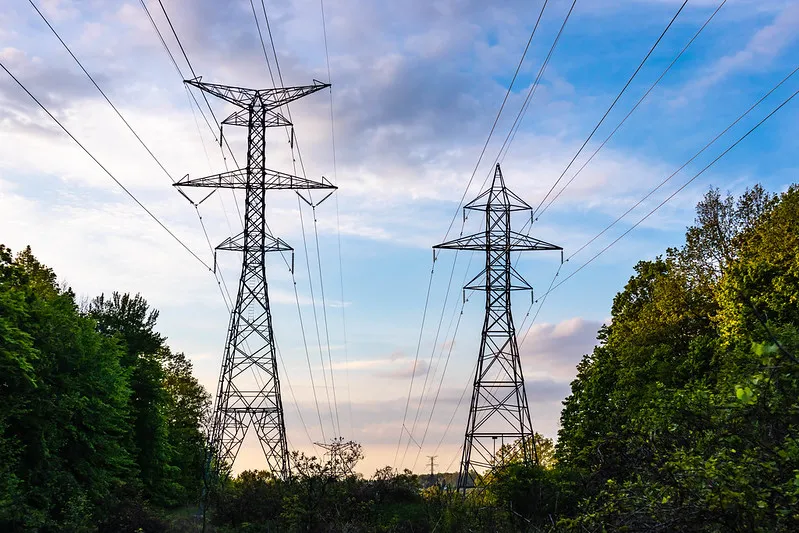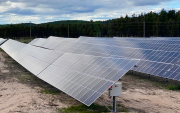In response to turbulent trade dynamics with our southern neighbour, governments across Canada are busy making important decisions about the processes, projects, and reforms we need to create stronger economies and energy systems. And as recent discussion of the federal government’s Bill C-5 — including its criteria focused on “advancing the interests of Indigenous Peoples” shows, central to these decisions are Indigenous rights and the obligation that governments and industry groups have to uphold and respect them.
These are not new imperatives. They are long-held and constitutionally protected requirements that have informed the development of successful clean energy initiatives across the country. This includes in remote communities, where conversations about nation-building, energy security, and policy reform have been ongoing for decades.
In spring 2025, the Pembina Institute published Decarbonizing Remote Indigenous Communities, a report focusing on the regulatory context of clean energy development in remote Indigenous communities across B.C. and the territories. Informed by interviews with government and Indigenous clean energy leaders, the report provides insight into the relationship between Indigenous rights and clean energy development and highlights important lessons that should be applied as governments pursue “nation-building” initiatives in this unique and challenging political and economic context.
Lesson one: Indigenous consultation is not a piece of the regulatory process — it’s the foundation
Federal, provincial, and territorial governments have made commitments to implement the United Nations Declaration on the Rights of Indigenous Peoples (UNDRIP). These commitments affirm government responsibilities to work in cooperation and consultation with Indigenous peoples to implement necessary reforms to Canadian law and policy.
These commitments have many implications for energy projects and policy. When infrastructure is built on Indigenous lands, it is critical that their constitutionally and legally protected rights to consultation and decision-making are respected.
Despite its enactment, UNDRIP has not been implemented widely across Canada. This means that Indigenous rights are often not meaningfully considered when energy projects and policy are being proposed, approved, or implemented. This is a serious shortcoming that erodes Indigenous rights, increases the potential for harm on communities, and results in lengthy and expensive legal battles.
The good news is: we don’t have to look far for examples of when UNDRIP, reconciliation, and respectful partnership have been meaningfully sewn into the fabric of energy policy and project development. It’s time to learn from these stories, experiences, and recommendations as they remind us that collaboration and consultation are not just a piece of the regulatory process, they are the entire foundation.
Lesson two: Our regulatory system needs reform to better involve rights-holders
Our energy system is full of regulatory and policy barriers that challenge Indigenous communities, clean energy leaders, and rights-holders who want to build projects that create jobs, reduce emissions, and enable greater energy security. One of the biggest barriers embedded within these systems is the lack of well-funded and accessible engagement and collaboration processes with government, regulators, and industry.
If we want projects to be built quickly and effectively — while upholding our legal and constitutional responsibilities to Indigenous Peoples — then the voices of communities and rights-holders must be prioritized in key decisions from start to finish. This will require significant reform of existing processes — many of which currently leave little room for Indigenous perspectives. Current processes and standards do not create the conditions for true and meaningful engagement, and there’s a lot of work to do to change that.
- funding for regulatory engagement,
- rights-based/culturally informed negotiations,
- accessible and inclusive working groups,
- more transparent and accountable decision-making processes,
- and more.
Though this is not a one-size-fits-all list, it shines a light on the gaps in the regulatory system and the diverse solutions that can be implemented to fill them. Regardless of the method, the best way to improve and identify barriers within regulatory processes is always through collaboration with rights-holders.
Lesson three: Early and meaningful engagement is risk reduction
Conversations on major infrastructure development often revolve around whether Indigenous Peoples have veto power over projects. But this often-reductive framing of the conversation obscures the growing consensus around the importance of collaboratively designed and implemented energy projects. Increasingly, industry leaders and governments are recognizing the benefits of working alongside Indigenous Peoples to build projects that benefit communities, generate and distribute revenue equally, and help reduce emissions.
It is also important to confront and reject a common and unfair narrative that frames engagement and collaboration as an impediment to successful policy and project development. This ignores the benefits that come from collaboration and meaningful engagement: greater risk reduction, better relationships, and more thorough understanding of the impact of certain projects. Far from slowing things down, rights-holders have an important role to play in helping Canada urgently select, create, and advance energy projects that can have tangible and positive benefits for the environment and economy, now and into the future.
Lesson four: Indigenous clean energy leaders have valuable stories and perspectives to share
Across the country, Indigenous clean energy leaders are working toward the development of clean energy projects that centre reconciliation, emissions reductions, and energy security.
There is much to learn from these projects about the unique context of development in diverse regions across the country. This includes in remote and northern communities, where chronic underfunding has left many communities and regions without essential infrastructure that the rest of Canada often takes for granted (e.g. all-season roads, modernized electricity grids, and reliable high-speed internet) – an issue often referred to as the “infrastructure gap.”
Given the scope and ambition of Canada’s nation-building priorities, collaboration with northern and remote leaders is key to understanding how their unique contexts around energy development deeply impact timelines, funding expectations, and community engagement practices.
Conclusion
As the adage goes, the best time to plant a tree was 20 years ago. The next best time is now. This same concept can be applied to meaningful Indigenous consultation and engagement, as governments and industries set their sights on an ambitious development agenda that profoundly and inherently impacts Indigenous communities across the country.
Ongoing issues with regulatory processes have been challenging the nation-building initiatives envisioned by Indigenous leaders for decades. Today’s nation-building proponents have a lot to learn from the concerns, successes, and perspectives of Indigenous leaders who have long been working against strong headwinds. This is our chance to listen and collaborate to reach our shared goals for a more secure, healthy, and affordable future.











